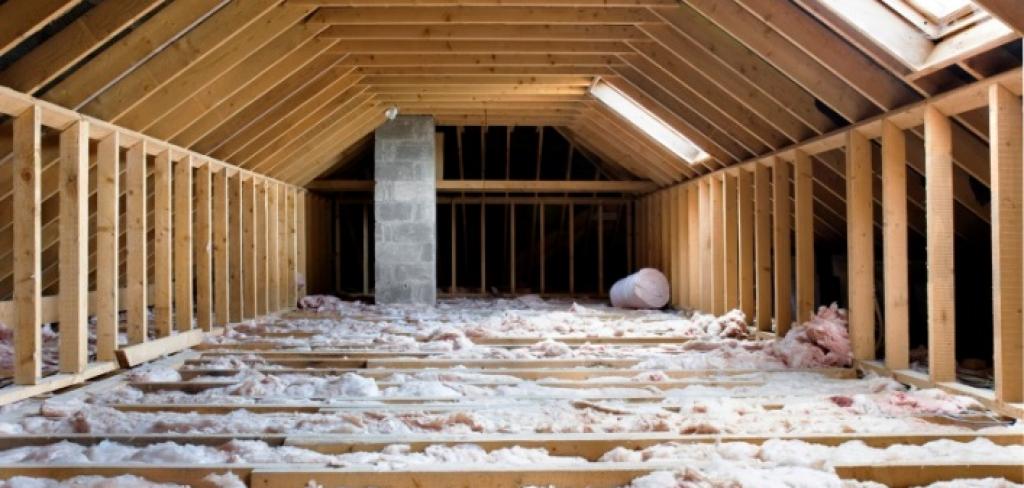While most homeowners don’t give much thought to what’s behind their walls, proper insulation is of key importance of having a comfortable, healthy home. Besides keeping your home warm in the winter and cool in the summer, insulation can help lower your energy bills, prevent mold growth and also keep unwanted noise out. Insulation helps keep outdoor air from getting inside your home and conditioned indoor air from escaping. This is achieved by trapping pockets of air and slowing down the in/out process. “In winter, heat flows directly from all heated living spaces to adjacent unheated attics, garages, basements, and even to the outdoors,” the U.S. Department of Energy states on its website. “Heat flow can also move indirectly through interior ceilings, walls, and floors — wherever there is a difference in temperature. During the cooling season, heat flows from the outdoors to the interior of a house.”


The Canada Housing and Mortgage Corporation (CMHC) compares a properly insulated house to dressing for the weather.
“A wool sweater will keep you warm if the wind is not blowing and it is not raining. On a windy, rainy day, wearing a nylon shell over your wool sweater helps keep you reasonably dry and warm. A house is similar,” the CMHC website says. “On the outside, underneath the brick or siding, there is an air barrier that does the same thing as the nylon — it keeps the wind from blowing through. Then there is the insulation (like your sweater) and a vapour barrier, which helps keep moisture away from the house structure where it can do damage.”
How insulation is rated
Insulation is rated based on a measurement of resistance the material has to the movement of heat. This is most commonly referred to as an R-value. The higher the R-value the more effective the insulation is. Local building codes list recommended R-values for each area of your house (these R-values are required for new construction). Improper installation of insulation can lower the R-value of the material you are using so it’s a good idea to follow the manufacturer’s instructions or hire a professional to do the installation.
Signs your home in poorly insulated
Cold floors and walls in the winter and hot inside air in the summer, mold growth, high energy bills and uneven heating or ineffective cooling are all signs of a poorly insulated home, according to the CMHC.
Safely working with insulation
Before knocking down your walls to add more insulation, keep in mind that older homes may have vermiculite insulation in the attic, which could contain asbestos. Old pipes and ductwork wrapped behind walls could also contain asbestos. If you have these materials or are uncertain about what was used, call a professional to come and test or remove them for you. Most municipalities require old fibreglass and other insulation types to be disposed of in a special manner as well. Check with your local waste management facility to get the disposal requirements. When working with new insulation you should wear gloves, a long sleeve shirt and pants to prevent skin irritation. A respirator mask and eye protection are also recommended.
Where to add insulation
Christine Sampson, Marketing Leader at Owens Corning Canada — a major insulation manufacturer — said that “unfinished basements and attics” are the two areas homeowners should focus on first when adding new insulation. “They can be topped up with insulation in a very cost-effective way,” she says. “No demolition required, just add more insulation.” Owens Corning Canada recommends R-values of 60 in the attic and 20 in the basement for “maximum comfort and savings,” Sampson said. Once the attic and basement are taken care of, focusing on exterior and interior walls, floors, and around windows and doors is also recommended. Keep in mind that adding insulation improperly can end up creating issues if not done properly. “Adding more insulation in wall cavities with high air leakage rates can cause condensation problems in walls,” said Sampson.
Other areas of your home you can insulate
Light switches and receptacles on exterior walls can be insulated with special foam inserts that sit between the cover plate and the wall. Insulating hot water pipes with pipe foam will help lower the cost of heating water and will prevent the possibility of pipes freezing in the winter. Caulking around doors and windows and using special weather stripping are all forms of insulating your home as well.
Remember to breathe
Healthy homes need to breathe and by adding more insulation (especially spray foam) you may also need to add extra venting or an air exchanger. “When a home is airtight it can’t [breathe],” said HGTV’s Mike Holmes. “So you need to bring in fresh air and get rid of the stale, indoor air. If you don’t, you will have condensation issues. That means moisture, which can lead to mold.” Holmes recommends a Heat Recovery Ventilator (HRV) be added to homes that have been sealed with spray foam.

